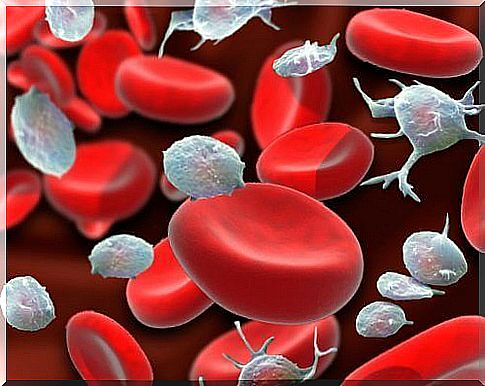Postoperative Bleeding And Risks

Injury or damage can cause postoperative bleeding, which can also take the form of a blood clot. Different blood vessels carry oxygen and nutrients to the tissues. When blood vessels become damaged, bleeding can occur inside or outside them. The subject of this article is postoperative bleeding and its risks.
Hemostasis is a process that causes bleeding to stop in damaged blood vessels. For clotting to occur, the following factors are required:
- Platelets. Platelets are very small cells produced by the bone marrow. The normal number of platelets is 150,000 to 400,000.
- Coagulation factors. These factors are found in the blood and are mainly formed in the liver.
Surgery increases the risk of venous and arterial thrombosis. It is also known that temporarily stopping antithrombotics increases the risk of blood clots and clots.
The risk of bleeding prior to surgery from oral anticoagulants is usually low. However, it is large during and after surgery, depending on the surgery.
Postoperative bleeding: risk factors

Surgical risk assessment is necessary for surgical patients. Therefore, the antithrombotic treatment prescribed by a doctor depends on the condition of the patient.
Your doctor should assess the risk of both blood clots and bleeding caused by the operation. It is important to consider the risk of blood clot formation due to the fact that discontinuation of anticoagulants increases the risk of thrombosis.
In these cases, your doctor may either continue or stop your anticoagulants. If discontinued, the patient should be prescribed heparin and then restarted with anticoagulants. This is mainly due to the immobility after surgery, but also to the blood clot-promoting effect of the surgery itself.
Postoperative bleeding
Major bleeding is severe bleeding that requires a transfusion of at least two units. There may also be a leak inside the skull, chest, or peritoneum.
When surgery is complicated by bleeding, the treatment chosen by your doctor depends on the extent and location of the bleeding. The degree of anticoagulation also plays an important role. Major bleeding can be life threatening.
The risk of bleeding also determines whether antithrombotic therapy is continued after surgery. If anticoagulant discontinuation persists for more than 24 hours, the physician may need to consider prescribing heparin to the patient.
Continuation of anticoagulants after surgery

Anticoagulant therapy should be continued two or three days after surgery, always of course as directed by your doctor.
Treatment should be started at low doses, ie the doses used for prophylaxis, two or three days after surgery. The dose used for treatment should be started after 48-72 hours, but only if the patient does not suffer from persistent postoperative bleeding.
Most patients treated with warfarin and acenocoumarol can continue anticoagulant treatment in the evening after surgery, as long as they do not suffer from bleeding complications.
However, the effectiveness of treatment does not begin until four or five days after it is started. One of the main goals of anticoagulant therapy is to restore the patient’s antithrombotic state as soon as possible. Physicians should consider the postoperative hemostasis and risk of bleeding associated with the procedure.
In general, most postoperative bleeding stops within 24 hours of surgery. But as this is not always the case, anticoagulant therapy should not be initiated until haemostasis has been restored.









